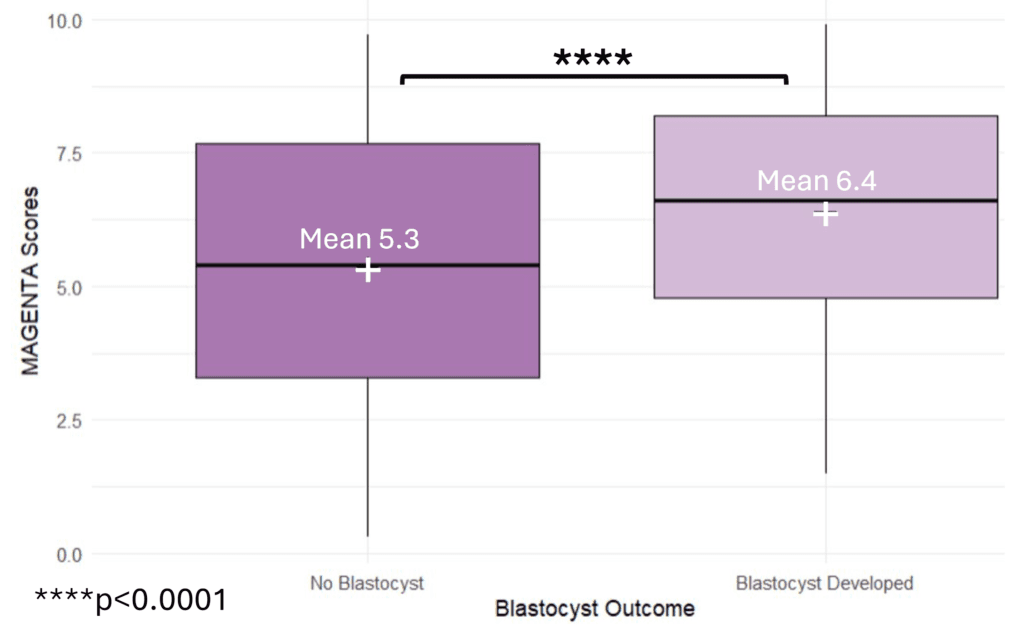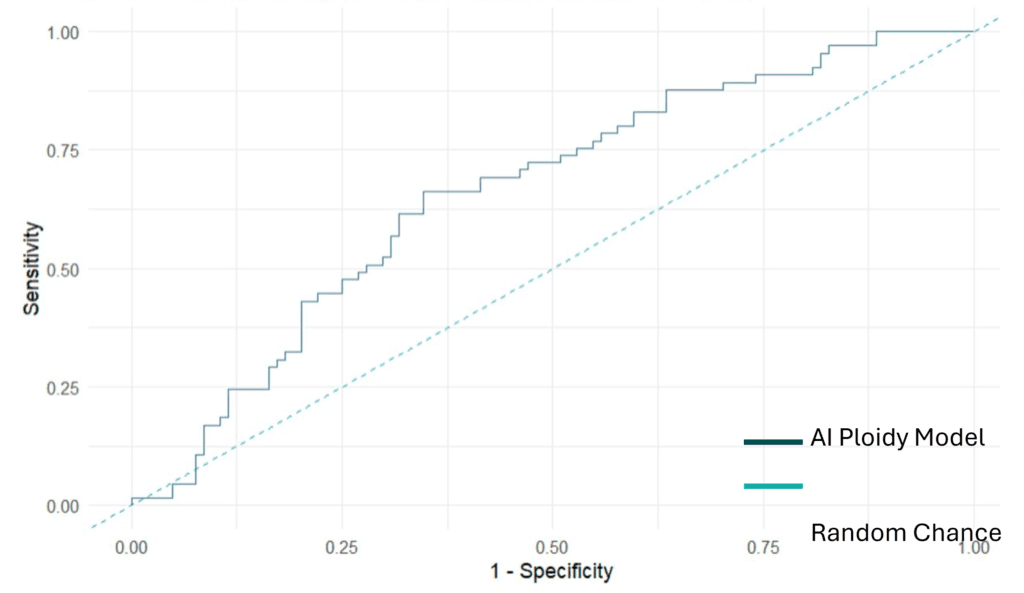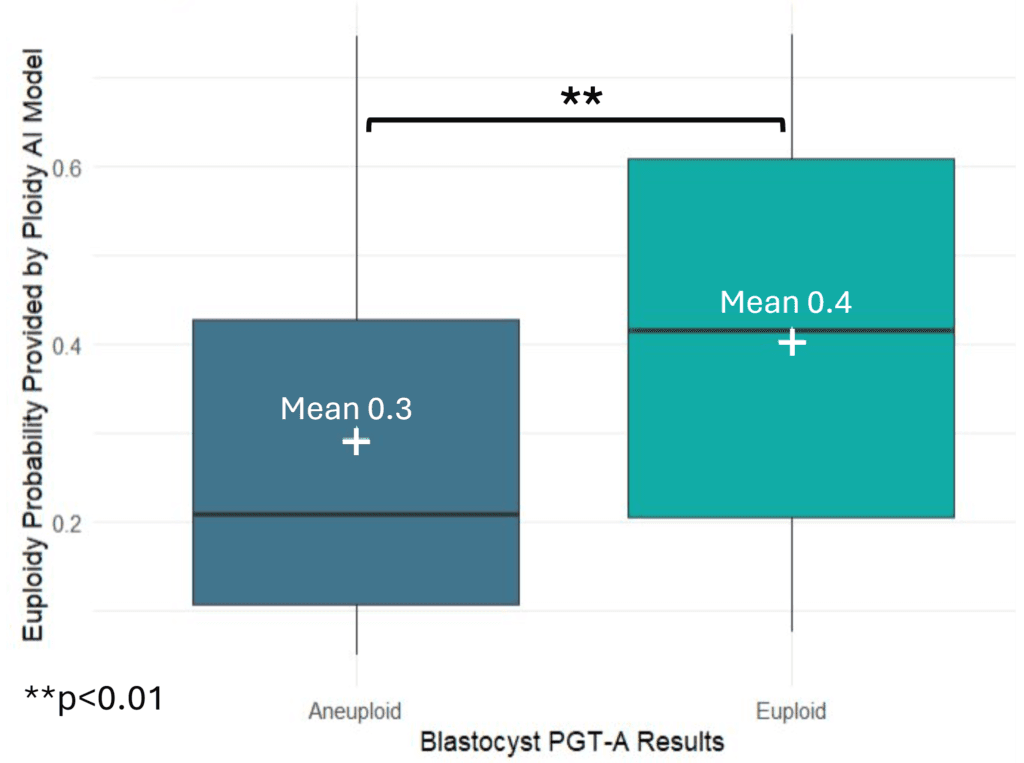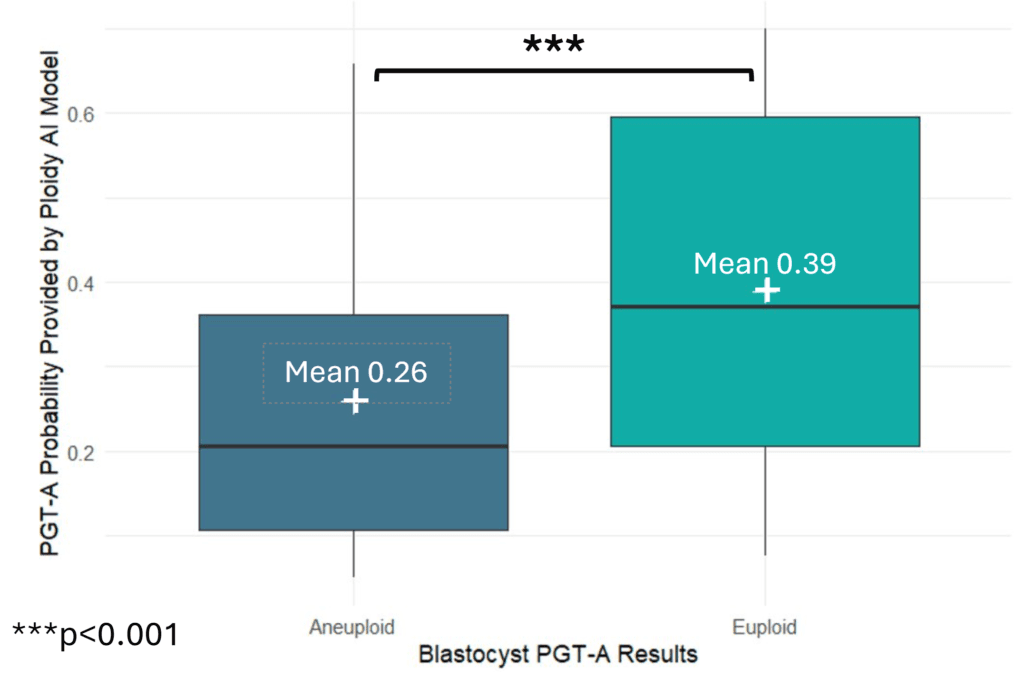
Abstract (COGI 2024): Artificial intelligence (AI) models predict blastocyst development and ploidy status from images of mature, metaphase II (MII) oocytes
PROBLEM STATEMENT:
Blastocyst formation and embryo ploidy status are crucial to IVF success. While PGT-A has become widely adopted to aid in blastocyst selection for transfer, it remains invasive, expensive, and technically challenging. Most chromosomal abnormalities arise from maternal meiotic origin, however, there is a lack of non-invasive evaluation methods for the role of oocyte quality in embryo ploidy status. This study confirmed the ability of one AI model to predict blastocyst development from images of MII oocytes, and validated a second, new AI model to predict blastocyst ploidy status from the same images.
METHODS:
Retrospective study of 112 patients (642 oocytes; 328 blastocysts, 314 non-blastocysts) undergoing IVF-ICSI at a Spanish clinic. 177 blastocysts underwent PGT-A; 65 were euploid, 104 were aneuploid, and 8 were mosaic (excluded). Images of oocytes were captured immediately post-ICSI from GERI TimeLapse incubators and were assessed by the blastocyst AI model to assign a score of 0-10, with higher scores correlating to greater likelihood of blastocyst development. This score is included as a feature for the ploidy AI model to then predict the probability (0-100%) of the oocyte becoming a euploid blastocyst. Analyses were conducted by Welch’s t-test. Ploidy AI model performance was assessed by AUC.
RESULTS:
As found in previous studies, oocytes that developed into blastocysts had a significantly higher mean score assigned by the blastocyst AI model compared to those that did not (6.4 vs. 5.3;p<0.001). The ploidy AI model effectively distinguished between oocytes that developed into euploid versus aneuploid blastocysts (AUC=0.66; sensitivity=0.35; specificity=0.80). The model’s probabilities were significantly higher for oocytes that developed into euploid vs. aneuploid blastocysts (40% vs. 30%;p<0.01), which was also displayed in subgroup analysis for patients ≥35 years old (39% vs. 26%;p<0.001). Subgroup analysis for patients <35 years old was not conducted due to a low sample size(n=12 oocytes).




CONCLUSION:
This study represents the first external clinical validation of the ploidy AI model to predict blastocyst ploidy status from MII oocytes. The models’ assessments highly correlate with oocytes’ developmental and genetic potential, offering a reliable, non-invasive method to assess oocyte quality and elucidate its role in embryo developmental outcomes.
You Might Also Like …
Join our mailing list for dispatches on the future of fertility
